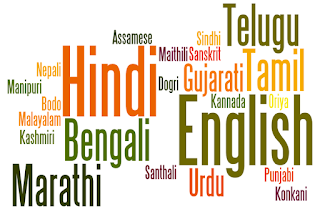“We
do not inherit The Earth from our Ancestors; we borrow it from our Children”
We humans have used up all the natural resources-water, soil, clean air etc allocated for the whole of 2017 in just 7 months. The Earth Overshoot Day was on 2 August 2017 and we will have to survive on credit of the nature for rest of the year.
The Global Footprint Network (GFN), an organisation partnered
with the World Wide Fund for Nature, produced the results.
Earth Overshoot Day was first calculated in 1986 and fell in the month of November. Since
then, the day is receding fast. It was 8TH of august in 2016,
advanced by a week this year.
Of the total ecological footprint, carbon emission
forms a whopping 62%. This includes the
burning of fossil fuels, but also processes such as deforestation—which reduces nature’s ability to
remove carbon dioxide from the atmosphere.
Overfishing,
wastage of food, overharvesting forest resources are all factors that are
contributing to the rapid exhaustion of the world’s natural resources,
resulting in depletion, poverty, and a large number of species facing extinction.
Unsurprisingly, industrialized nations are the
biggest offenders in terms of using up natural resources. Australia tops the
list: if the world’s population lived like Australia’s, we would need 5.2
planets to meet our resource needs. The United States comes in second, with the
American population demanding the equivalent of five planets to satisfy its energy requirements.
If the
current consumption pattern is followed the human race would need 1.7 planets
to meet its resource demand.
Food makes up 26% of our
footprint. If we cut food waste in half, and swap protein-intensive foods for more
fruit and vegetables, it could be reduced to 16%.
For
instance red meat such as beef and lamb is responsible for 10 to 40 times as
many greenhouse gas emissions as common vegetables and grains.
Livestock
are typically fed corn, soybean meal and other grains which have to first be
grown using large amounts of fertilizer, fuel, pesticides, water and land.
China’s
government is committed to reducing
meat consumption by 50% by 2030. This
would reduce the Ecological Footprint by more than 126 million global hectares
and move the date of Overshoot Day back 1.5 days
The 2030 agenda of Sustainable
development goals needs to be achieved so that the overshoot day does not
recede further.
Outcome
of the study made by Global Footprint Network indicates the following.
- Reducing the carbon component of humanity’s Ecological Footprint by 50% would move Earth Overshoot Day by 89 days, or about three months.
- If we cut food waste in half worldwide, we would move Overshoot Day by 11 days.
- Empowering women and girls results in greater gender equality and stabilizes population. If every other family in the world had one less child, we would move Overshoot Day 30 days by 2050.
- If we reduce driving by 50% around the world and opt for walking, biking or taking public transit instead, Earth Overshoot Day would move back 10 days.
“So put down that chicken
wing and pick up some spinach".
-Daneelo Nugara






